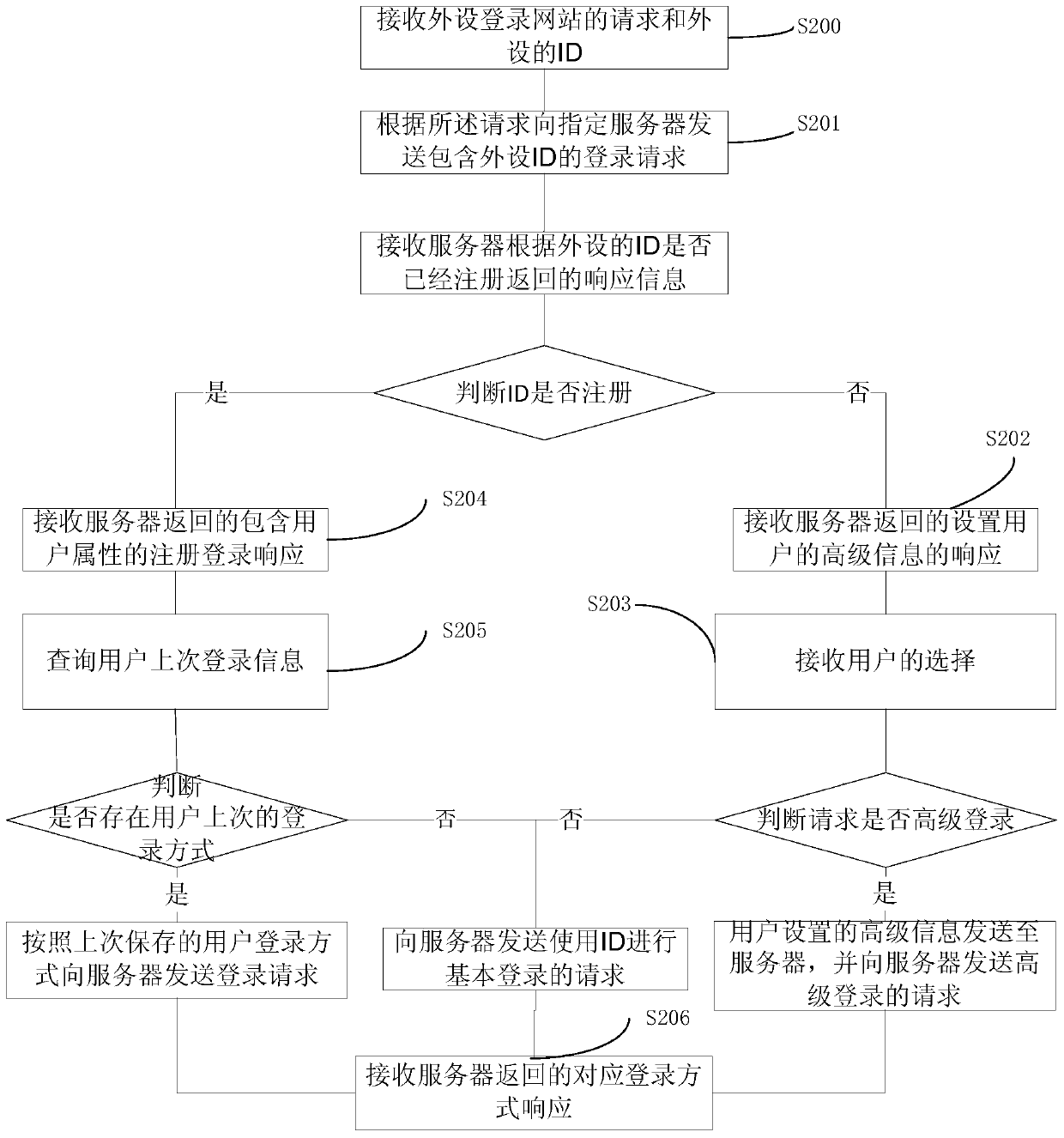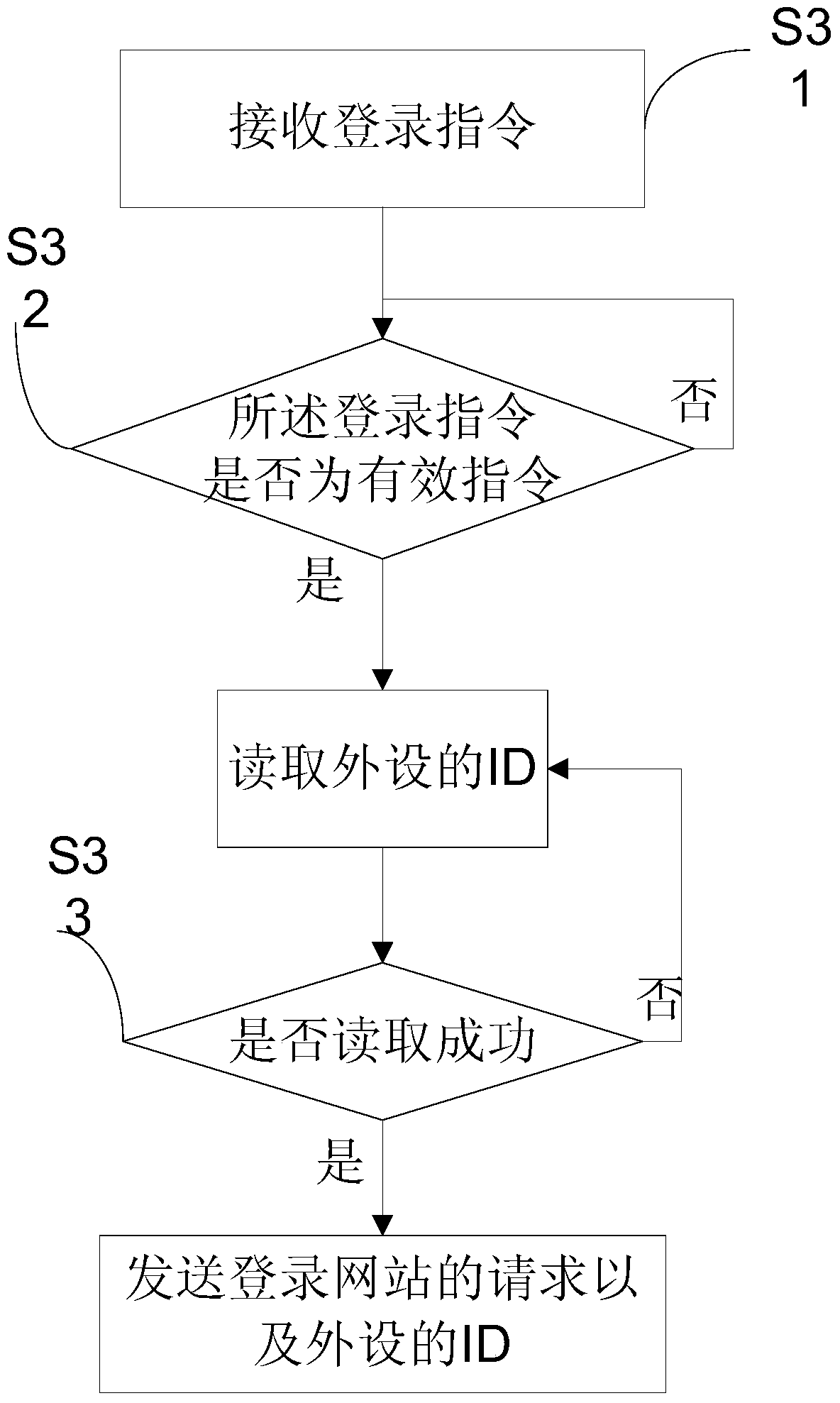A method of logging into a website and its server, client and peripherals
A client and server technology, which is applied in the field of website login, can solve the problems of high misjudgment rate, automatic registration and cumbersome way of logging in to the Internet, and achieve the effects of not being lost easily, reducing registration time, and simplifying registration steps
- Summary
- Abstract
- Description
- Claims
- Application Information
AI Technical Summary
Problems solved by technology
Method used
Image
Examples
Embodiment 1
[0047] In this embodiment, a method for logging in to a website is provided, which is used on the server side, such as figure 1 shown, including the following steps:
[0048] S100. Receive a login request including a peripheral device ID sent by a client.
[0049] S101. Determine whether the ID of the peripheral device is registered, send response information to the client according to whether the ID of the peripheral device has been registered, and log in according to the information returned by the client. If the peripheral ID has been registered, execute S102-S103; if the user is not registered, execute S104-S106.
[0050] S102, the peripheral device ID has been registered, then authenticate the peripheral device ID, and return to the client a registration login response containing user attributes, the user attributes being registered ID users
[0051] S103. Receive the information returned by the client, judge whether there is the last login method of the user, if yes, l...
Embodiment 2
[0059] In this embodiment, a method for logging in to a website is provided, which is used for a client, corresponding to the server in Embodiment 1, such as figure 2 , including the following steps:
[0060] S200. Receive the request of the peripheral device to log in to the website and the ID of the peripheral device.
[0061] S201. Send a login request including the peripheral ID to a designated server according to the request.
[0062] Then, the receiving server performs corresponding processing according to the response information returned by whether the ID of the peripheral device has been registered. When logging in for the first time, execute S202-S203, and when not logging in for the first time, execute S204.
[0063] S202. When the ID of the peripheral device is not registered, receive a response for setting the user's advanced information returned by the server;
[0064] S203. Receive the user's choice, and send the user's choice to the server. If the user choo...
Embodiment 3
[0070] This embodiment provides a method for logging in to a website, which is used for peripherals, such as image 3 shown, including
[0071] S31: Receive a login instruction;
[0072] S32: judging whether the login command is a valid command, if yes, read the ID of the peripheral device;
[0073] S33: After successfully reading the ID of the peripheral device, send a request to log in to the website and the ID of the peripheral device to the client.
[0074] In addition, the peripheral device can also choose according to the information returned by the server provided by the client. For the first login, choose whether to perform account password and data improvement settings, and for non-first login, choose whether to use a password to log in. Provide users with a variety of options to make it more convenient for users to use.
[0075] In other implementations, the device used by the user when selecting the login method may not be the peripheral device that stores the ID...
PUM
 Login to View More
Login to View More Abstract
Description
Claims
Application Information
 Login to View More
Login to View More - R&D
- Intellectual Property
- Life Sciences
- Materials
- Tech Scout
- Unparalleled Data Quality
- Higher Quality Content
- 60% Fewer Hallucinations
Browse by: Latest US Patents, China's latest patents, Technical Efficacy Thesaurus, Application Domain, Technology Topic, Popular Technical Reports.
© 2025 PatSnap. All rights reserved.Legal|Privacy policy|Modern Slavery Act Transparency Statement|Sitemap|About US| Contact US: help@patsnap.com



